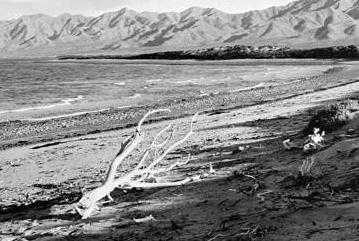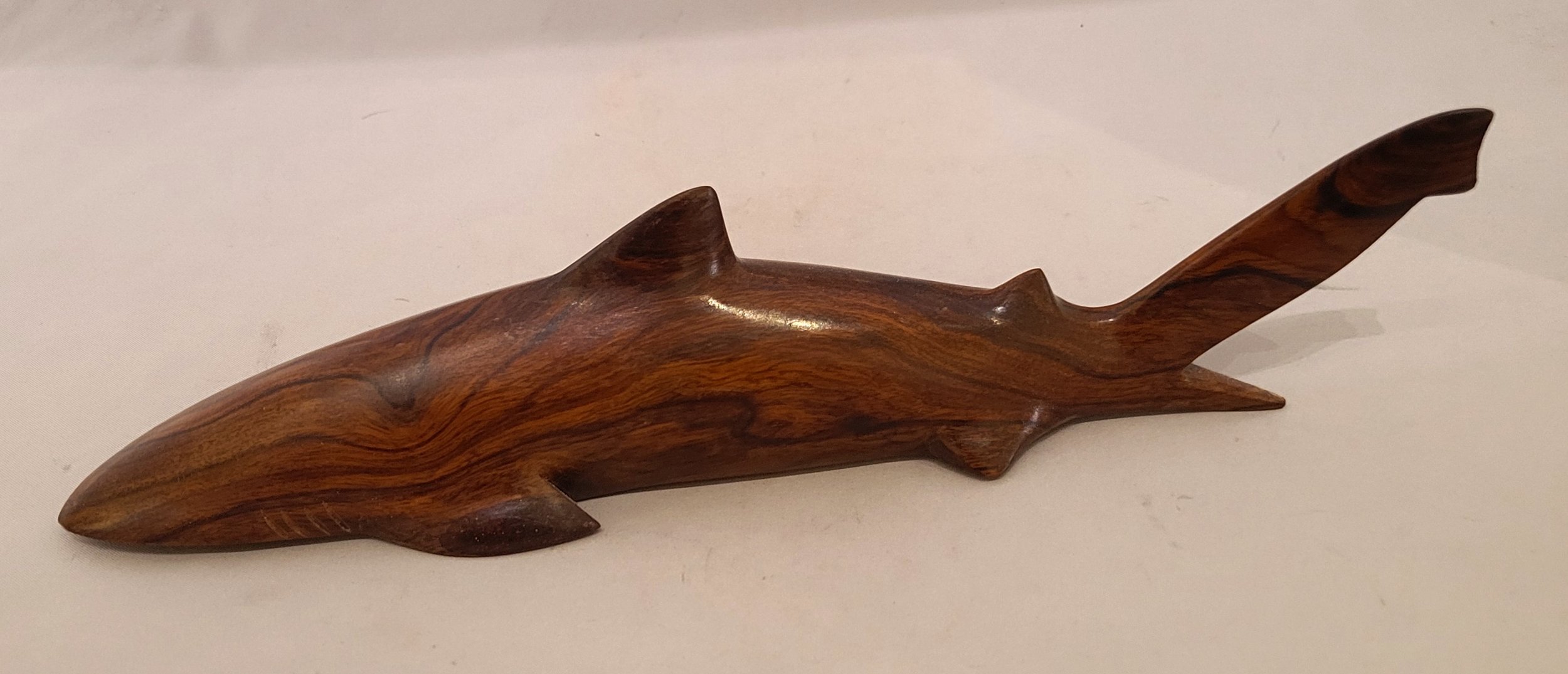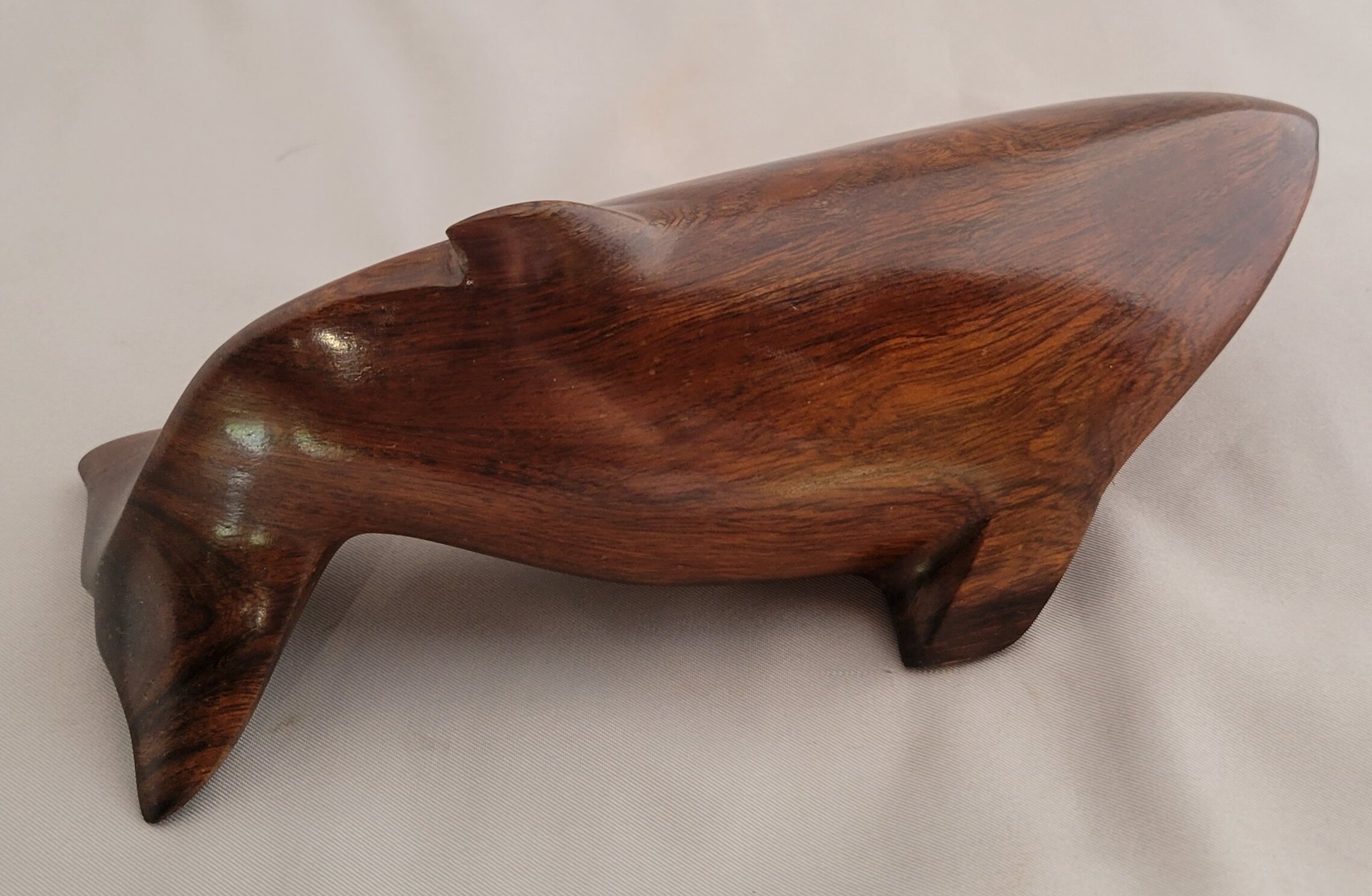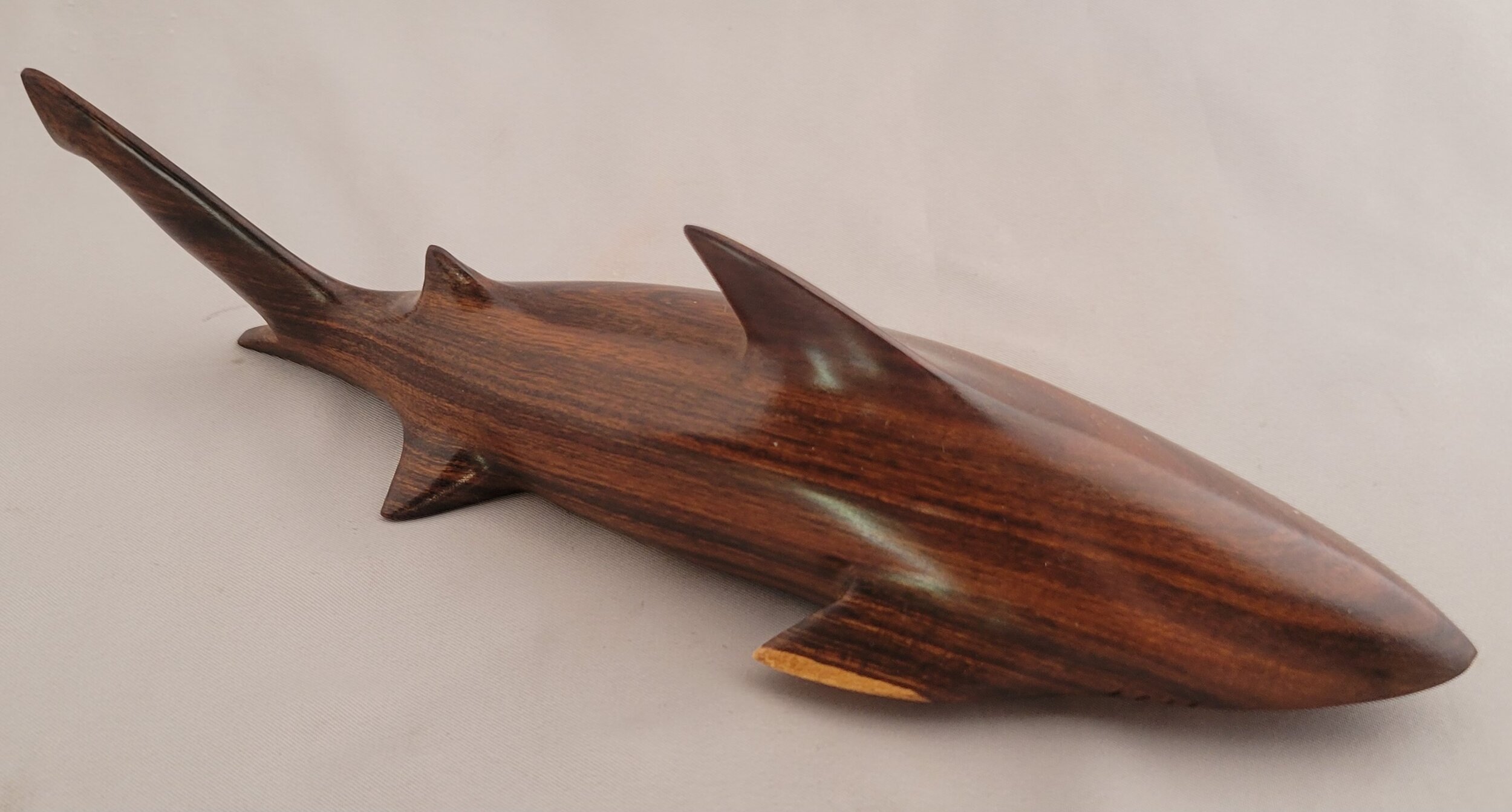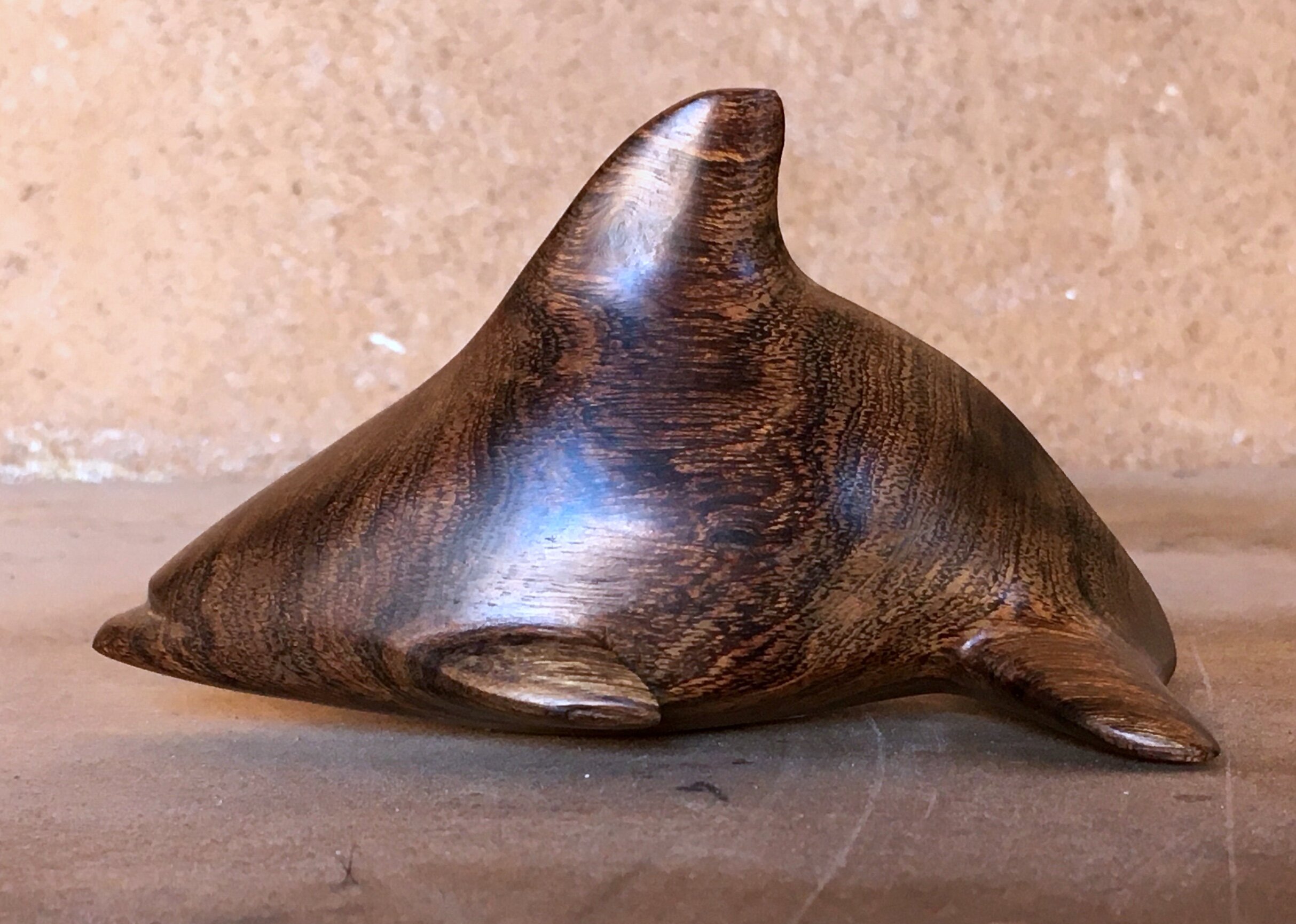STONE & IRONWOOD FIGURINES BY THE SERI (COMCAAK)
The Seri live along the desert coast of the Sea of Cortez in two villages: Punta Chueca (Socaaix) and El Desemboque (Haxöl Iihom). They call themselves Comcaac. Traditionally hunters and fisherman, they fished the Gulf of California and off the islands known as Tiburon (Tahejöc) and San Esteban (Cofteecöl). Additional foodstuffs were gathered from the desert surrounding their villages, including fruit from the cardon cactus.
Competition from Mexican commercial fishing operations has seriously impacted their fishing and nearly decimated the turtle population that once helped sustain the Seri.
Their baskets or hataal are woven of haat or torote, also known as limberbush or jatropha cuneata. The red-brown color comes from the inner bark of the root of the heepol, white ratany (kraneria grayi) plant. The black now used is an aniline dye. Their beautiful, strong basketry work can be found in our "More Baskets" Gallery.
They traditionally used ironwood for such objects bowls, spoons and rasps but beginning in the 1960s, began carving sea animals. Jose Astorga was the first carver. In recent decades competition from Mexican wood-working shops with power tools and the decimation of the ironwood trees by charcoal-makers has all but eliminated the craft. One notable carver, Solario Martinez, is carving out of stone he hand quarries. (see bottom of this page)
Selected References:
The Seris. By David Burckhalter
Among Turtle Hunters & Basket Makers: Adventures with the Seri Indians. David Burckhalter
The Seri Indians of Sonora Mexico. Bernice Johnston
People of the desert and sea: ethnobotany of the Seri Indians. Richard Felger and Mary Moser
Singing the Turtles to Sea: The Comcáac (Seri) Art and Science of Reptiles. Gary Nabhan
Three carvings by Manuel Romero. The dophin is 8 inches and $100. A shark that is 11 inches and $120. The Quail is 5 inches long. $60 (All in Tucson).
Three sea animals by Manuel Romero. The sea turtle has amazing wood grain and is 5.75 inches long and $100. The whale measures 7.5 inches and $100. The shark is 11 inches and $120. (ALL IN TUCSON)
More carvings by Manuel Romero..The whale is 7.5 inches and $100. This turtle is 5 inches and SOLD. The shark is 9 inches long and $100. This quail is a bit lighter in color, which usually means it is from a younger tree. 9 inches and $110. (ALL IN TUCSON)
The sea turtle was carved by Manuel Romero. 7 inches and $80. The snake is also by Manuel Romero. 12.5 inches and $100. A whale by Rosa Julia Lopez, this one is 6 inches long and $50. The rasp is a musical instrument used by several cultures in the Americas. 17.5 inches and $120. (ALL IN TUCSON)
A sleek whale carved by Francisca Romero. It is 6 inches long. $50. (SANTA FE)
Left to right: A dolphin by Nacho Barrett measuring just over 4.5 inches long, $40. The second dolphin is by Francisca Romero. This one is 7 inches long and $60. (These two are in SANTA FE). The snake is by Manuel Romero. 14 inches long and $120. (TUCSON). The Vaquita is a small, highly endangered porpoise (last estimate was that under 10 still exist in the wild) that inhabit the Sea of Cortes where the Seri live. This one was carved by Manuel Romero. 6 inches and $80. (TUCSON).
SOLARIO MARTINEZ
He -with his family- is the only Seri currently carving in stone rather than ironwood. He walks into the Sierra de los Cirios Mountains where he mines the stone with a pickaxe and carries it out in a back pack. Once home, using chisel, hacksaw and a variety of files he fashions birds, seals, turtles…the full range of wildlife known to the Seri.
Seal carved of soapstone by Manuel Monroy, 3 by 2.5 inches $30. A horned lizard by Solorio Martinez. 4 by 2.75 inches and $40. (BOTH IN TUCSON)


